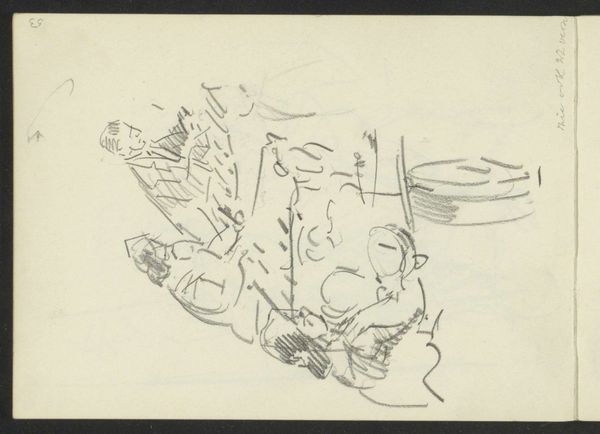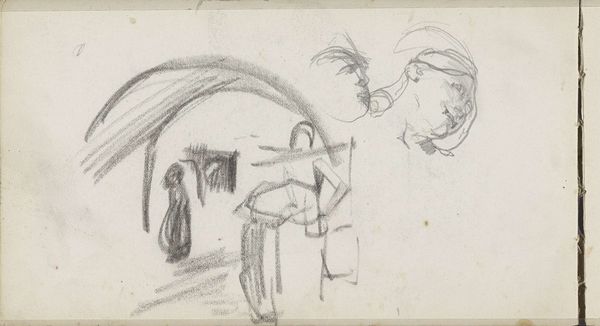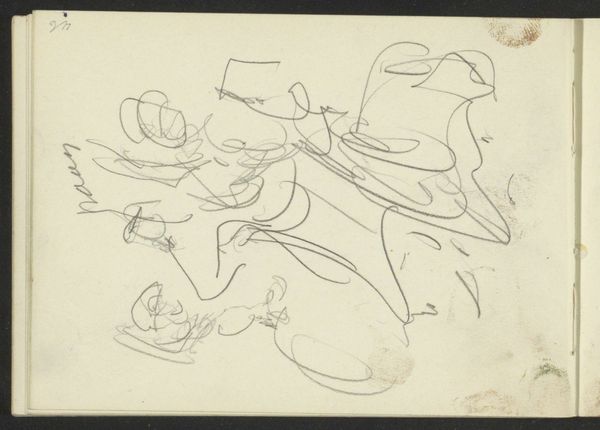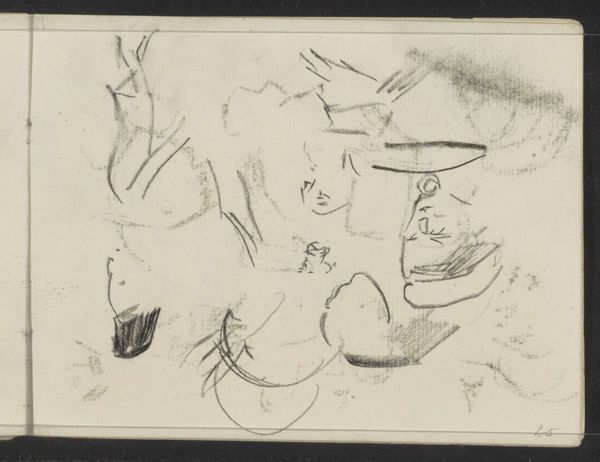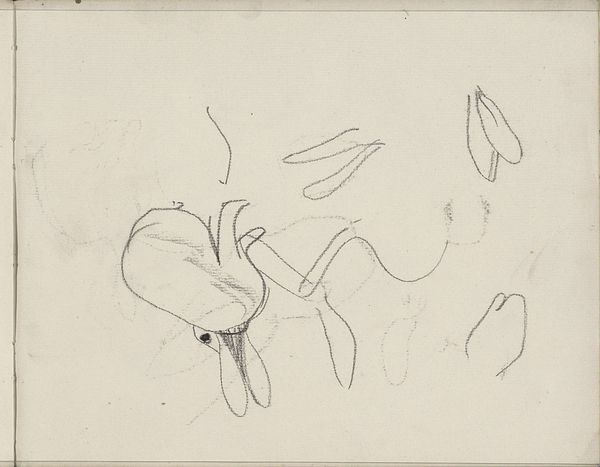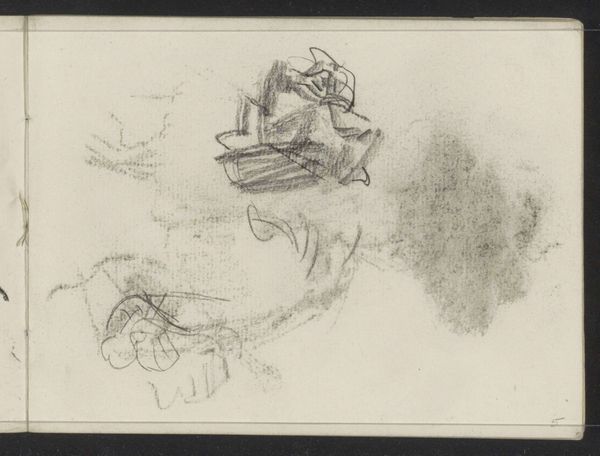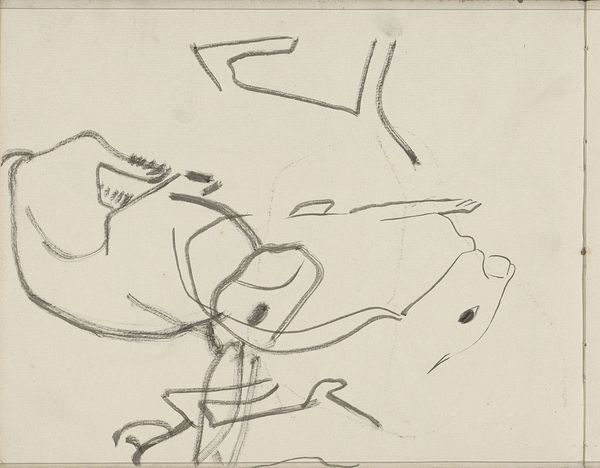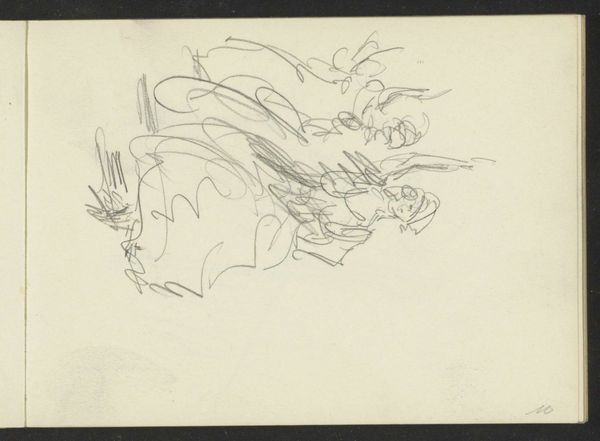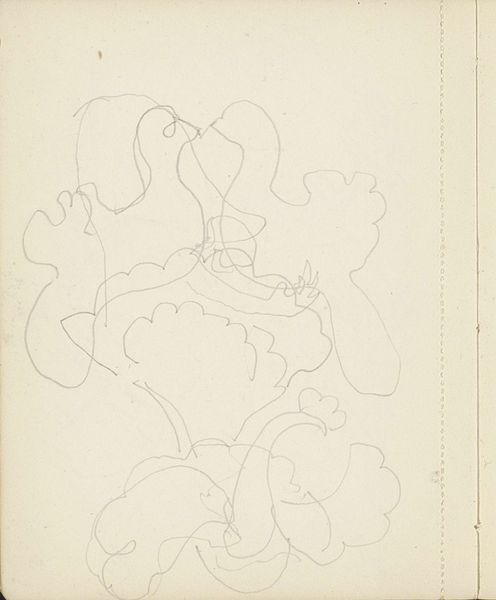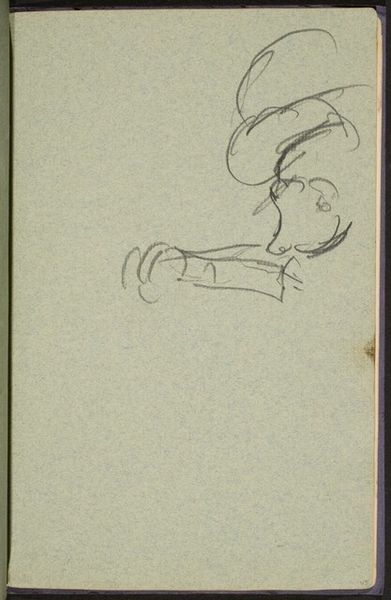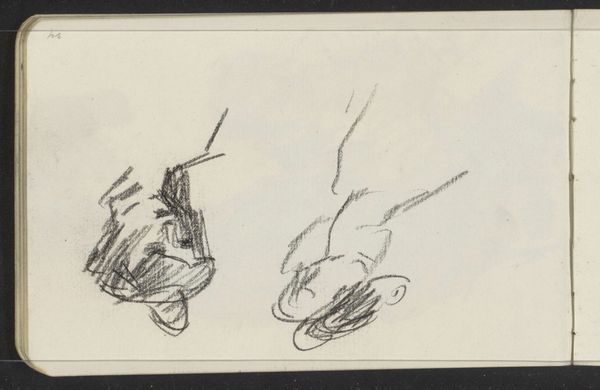
Copyright: Rijks Museum: Open Domain
Editor: This is "Figuur met een blaasinstrument in een mensenmenigte" by Carel Adolph Lion Cachet, made in 1896. It looks like a pencil drawing, very light and impressionistic. It seems like a fleeting moment captured in a crowd, but it’s quite abstract. What do you see in this piece, beyond the surface? Curator: It reminds me of societal anxieties visualized through collective experience, Editor. Notice the anonymous faces – or lack thereof. Cachet gives us just enough detail to recognize figures in a crowd, dominated by a wind instrument. Does this blurriness feel intentional to you? Editor: Yes, it does. It's almost as if the individuals are losing their identities within the mass. But the wind instrument – does that have symbolic meaning? Curator: Absolutely! Think about what wind instruments represent: breath, sound, music, communication, but also clamor and cacophony. It might represent the voice of the people, either harmonious or discordant. How do you interpret its prominence in this sea of faces? Editor: Maybe it's about the power of a collective voice, or perhaps how individual voices can be drowned out in a crowd. The instrument takes center stage. I guess the drawing explores themes of individuality versus collectivity. Curator: Precisely! It speaks volumes about the artist’s perception of society and perhaps even a sense of alienation within it. Consider also, does the style add meaning to the drawing, reflecting ephemerality? Editor: I see your point. Thank you! This really sheds light on what otherwise looked like just a casual sketch. Curator: My pleasure! Art always offers layers, doesn't it? It reflects cultural memory through imagery.
Comments
No comments
Be the first to comment and join the conversation on the ultimate creative platform.
